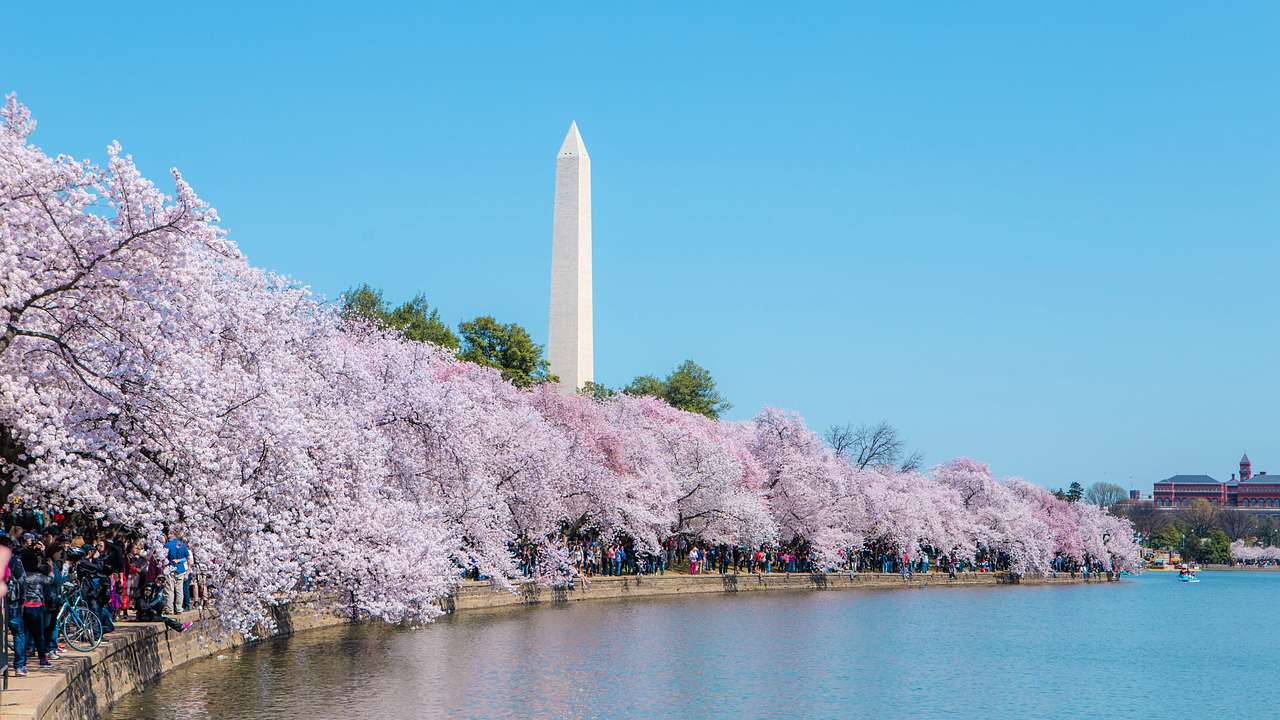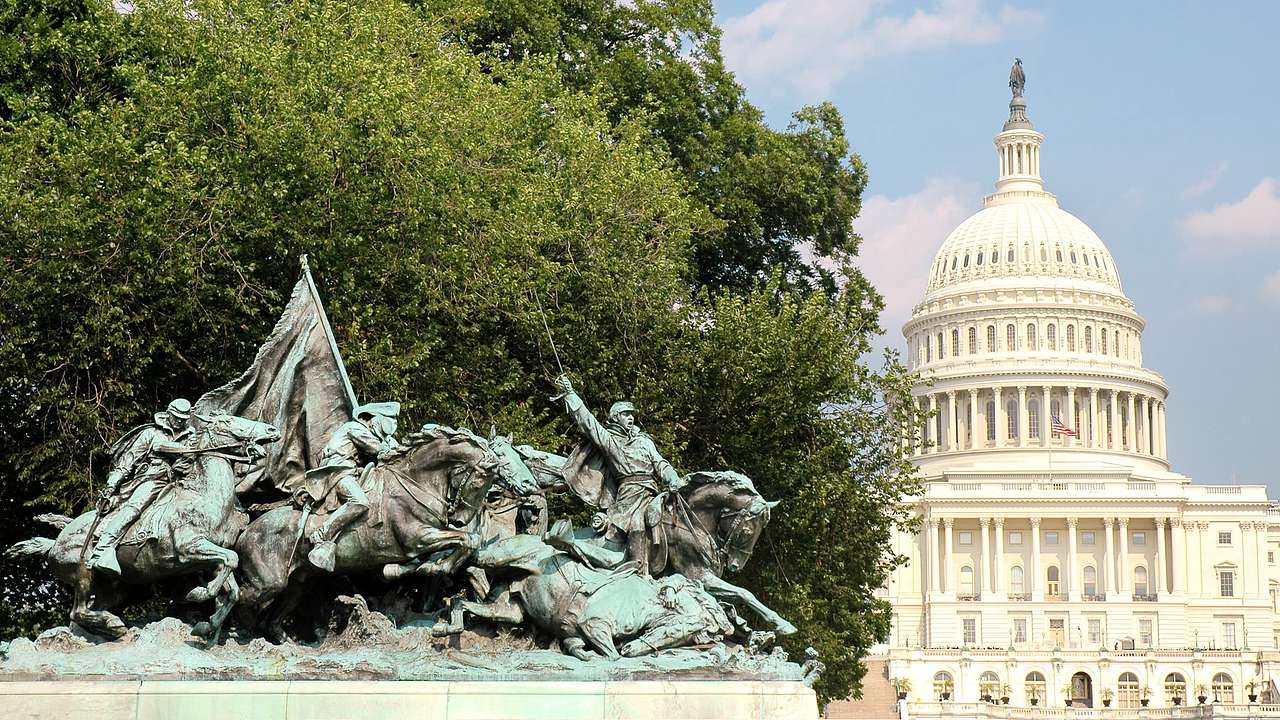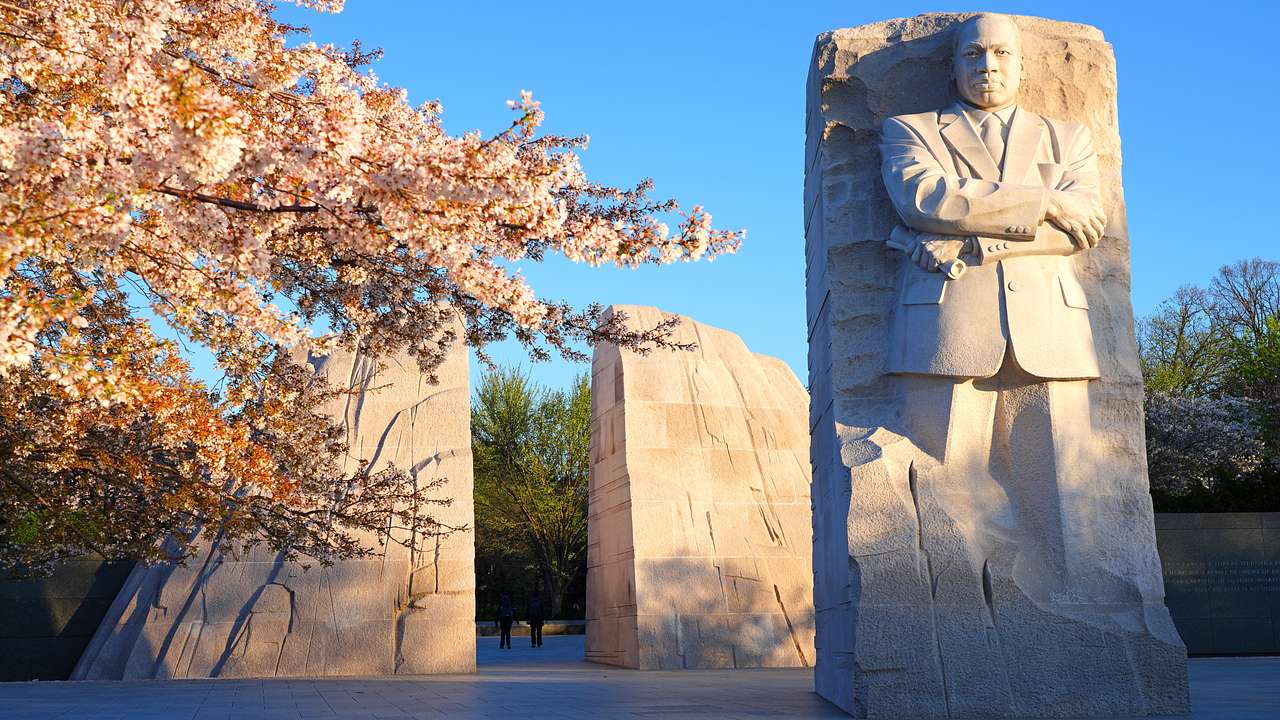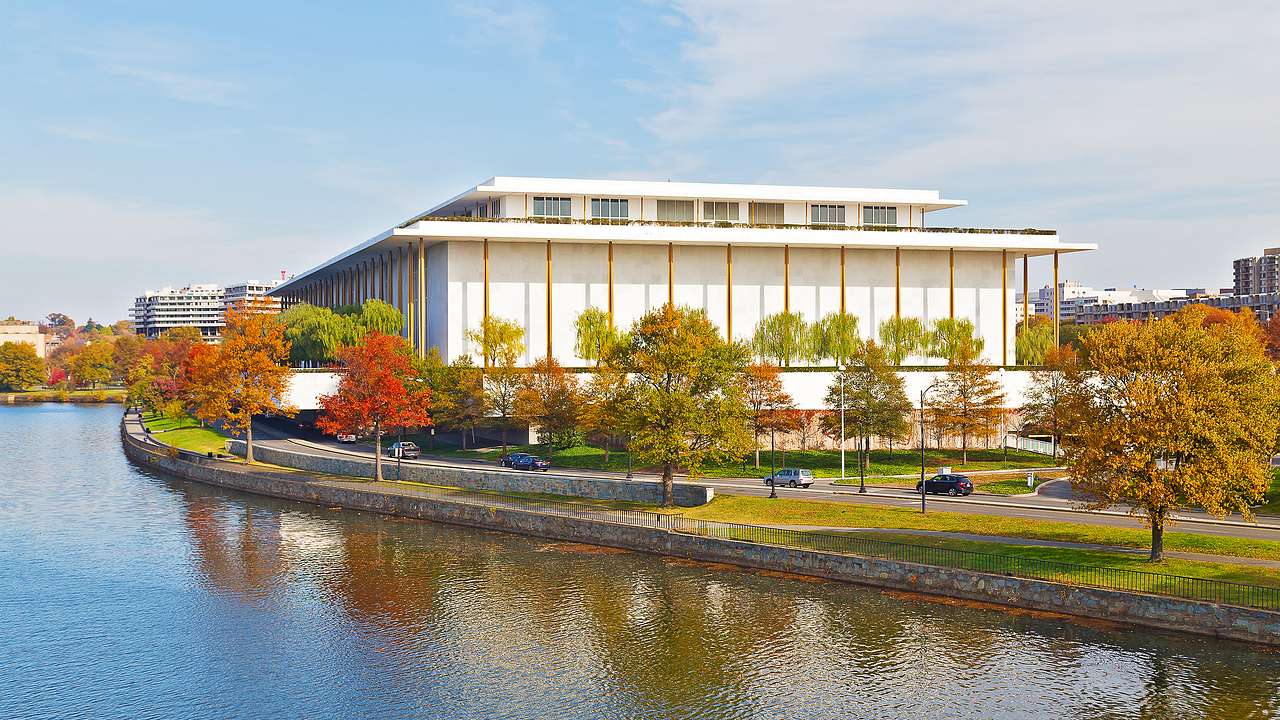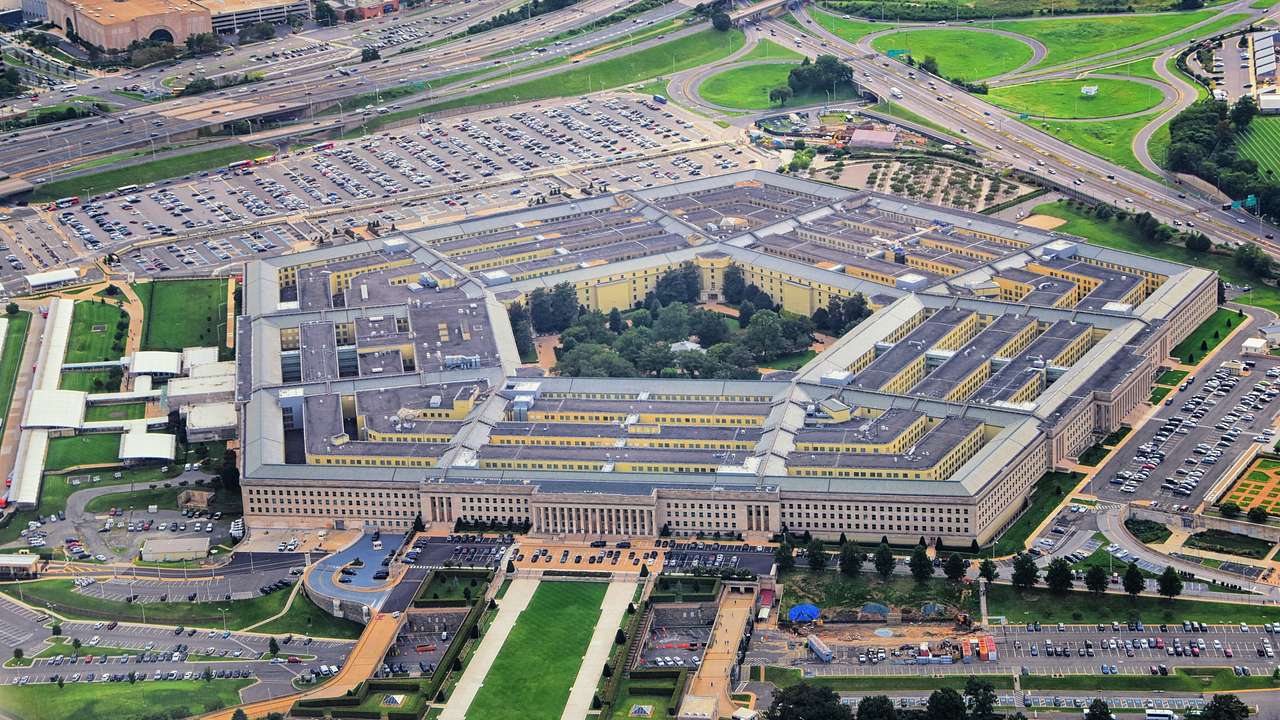19 Nicknames for Washington, D.C., You Should Know
Destguides may receive commissions from purchases made through affiliate links in this article.
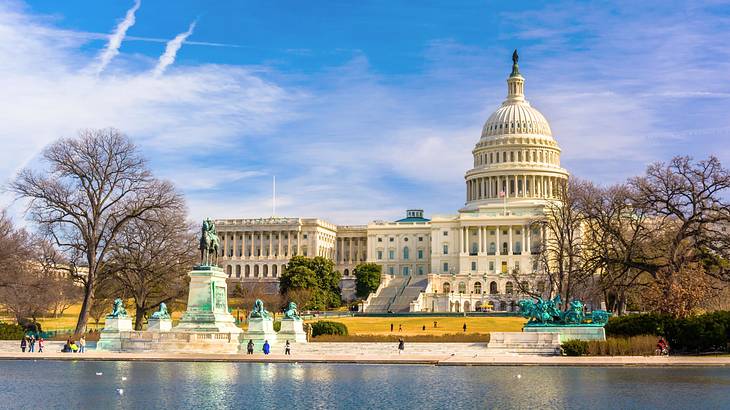
It may not be the largest by area or population, but few cities in the United States are more important than Washington, D.C. It's the Capital of America, where much of the country's government meets and conducts business. The impact of the decisions made in the city reaches far beyond the District's borders. Some people even call it the Capital of the World.
No matter how you refer to it, whether you say D.C. or Washington City (locals will forgive you, but they'll know you aren't one of them), you probably use one of these nicknames for Washington, D.C., just about every time you refer to it. There are plenty of names for the Capital City, some well-meaning and others potentially more offensive.
In this article, you will learn everything you need to know about 19 of the most popular nicknames for the city, including some historical monikers for Washington, D.C., that you don't hear as often anymore.
19 Washington, D.C., Nicknames
- The District
- The Swamp
- The City of Monuments
- Capital of America
- Washington City
- The Capital of the World
- Chocolate City
- D.C.
- Capital of the Vast Republic
- DMV
- The City of Southern Efficiency and Northern Charm
- Capital City
- City of Magnificent Distances
- The City of Magnificent Intentions
- The American Rome
- The Executive City
- Our Nation's Capital
- The Federal City
- The Beltway
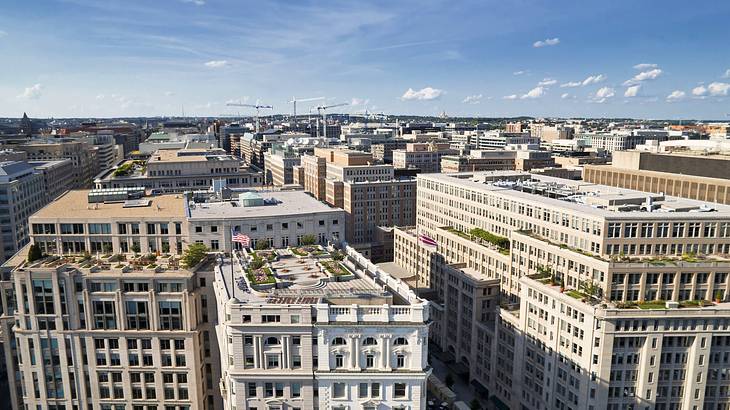
The District
You'll frequently hear Washington, D.C., referred to as the District, especially by locals. This differentiates it from the suburbs in Maryland and Virginia, considered part of the greater Washington, D.C., area.
The name is just a shortening of the District of Columbia. The use of "the District" highlights its unique status as a federal district directly under the jurisdiction of the United States Congress.
The creation of a federal district was outlined in the United States Constitution, Article I, Section 8, Clause 17, which gives Congress the authority to establish a federal district to serve as the nation's capital.
The Swamp
Washington, D.C., is commonly called the Swamp, although rarely for good reasons. The nickname originated from the belief that the city was built atop a literal swamp. This is just a myth. But it's hard not to believe the lie if you've ever spent a hot and humid summer in the middle of concrete-filled Washington, D.C.
Over the past few decades, the Swamp has also been a nickname for the political climate around Washington, D.C. Most people referring to it as the Swamp believe that an entrenched group of politicians and special interests are working to the detriment of American citizens. This belief has led to calls to "drain the Swamp" in recent years.

The City of Monuments
You'll find many famous landmarks and monuments throughout Washington, D.C. So it should come as no surprise that it is known as the City of Monuments.
From the Washington Monument to the Peace Monument in front of the U.S. Capitol Building, it's challenging to go anywhere in the heart of Washington, D.C., without encountering a towering memorial.
It should be noted that the City of Monuments isn't the only spot in the region that's proud of its statues: the Monumental City is one of the most well-known Baltimore nicknames from the 1800s.
Capital of America
The Capital of America may not be one of the most common D.C. nicknames. However, you'll still see and hear it used occasionally. It's a straightforward nickname that refers to the city's status as the capital of the United States of America.
While it is far from the population of other major US cities like New York and Los Angeles, Washington, D.C., is ground zero for political decisions that affect the entire country.

Washington City
Although many of the nicknames on this list are widely used by Washington, D.C., residents, Washington City is not one of them. It is, however, still a common nickname you'll hear used by out-of-towners trying to differentiate between Washington, D.C., and the state of Washington. Most commonly, this comes in the form of the question, "Are you from Washington City or Washington State?"
Technically, though, Washington is a city within the District of Columbia. However, after experiencing significant growth in the aftermath of the Civil War, Washington City became synonymous with the District of Columbia.
The Capital of the World
Washington, D.C., became known as the Capital of the World in the mid-1900s. During this period, the United States grew in international prominence following the end of World War II. Many important decisions impacting the rest of the world were being made in Washington, D.C.
From the Marshall Plan, which provided the funds and resources to help rebuild Europe after the war, to the Truman Doctrine, which offered assistance to nations of the world under authoritarian threat, the foreign policy initiatives coming out of Washington, D.C., during this time made it feel like the Capital of the World.
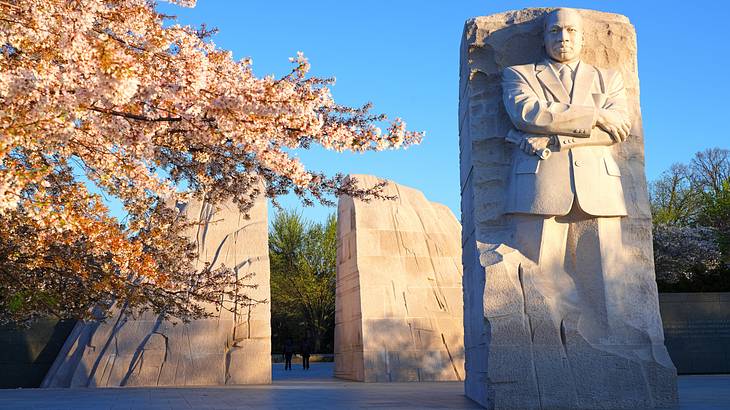
Chocolate City
No, Washington, D.C., isn't known for its sweets. Instead, it earned the nickname Chocolate City in the mid-20th century when it became the first major city in the United States to be comprised predominantly of black residents.
The Chocolate City moniker was a badge of honor for members of the African-American community in Washington, D.C., as the country was going through a tumultuous period of the civil rights struggle.
This nickname for Washington, D.C., was further ingrained in the city in 1975 when funk legend George Clinton and his band Parliament released their album (and title track) "Chocolate City" as a tribute to the nation's capital.
D.C.
Short for the District of Columbia (yes, it's named after Christopher Columbus), D.C. is one of the most common nicknames you will see or hear used to describe Washington, D.C. You'll find it used by everyone, particularly local residents talking about the city to people who aren't from the area.
Between locals, the District may be a more common phrase. But using D.C. helps out-of-towners understand that you're talking about Washington, D.C., and not Washington state. People who aren't from here often use Washington to refer to both, which can be a little confusing.
Capital of the Vast Republic
Dating back to the second half of the 1800s, Capital of the Vast Republic is an older nickname that's not commonly used today. At the time, the United States was experiencing a period of significant westward expansion. Washington, D.C., the core of this significantly growing nation, was the Capital of the Vast Republic.
The Capital of the Vast Republic phrase was first used by author Mary C. Ames in her 1874 book, "Ten Years in Washington: Life and Scenes in the National Capital, as a Woman Sees Them." Ames, an avid promoter of women's rights, penned the New York Independent newspaper's "A Woman's Letter from Washington" column.
DMV
It's hard to deny that DMV has become the most popular new D.C. nickname in recent decades. DMV is an abbreviation for the District (of Columbia), Maryland, and Virginia. It recognizes that the region is more than just a single city and unites the entire Washington metropolitan area under a single moniker.
While DMV does encompass all of Washington, D.C., the same is not true for Maryland and Virginia. The slogan only refers to the suburban areas surrounding the capital.
The nickname originated in the early 2000s among the Washington, D.C., area's hip-hop community. Historically centered in the city, gentrification was spreading the African-American population into other nearby towns.
Local rappers and hip-hop artists began using the DMV to represent how the local music culture was found throughout the region instead of solely within Washington, D.C.
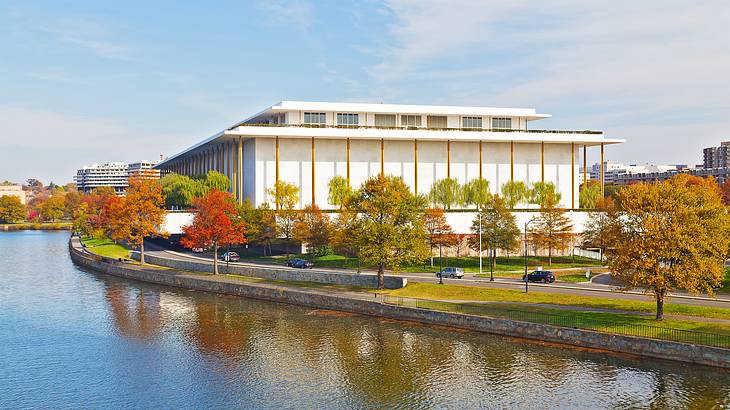
The City of Southern Efficiency and Northern Charm
It's an obscure nickname, but the City of Southern Efficiency and Northern Charm is undoubtedly one of the most unique ways to reference Washington, D.C.
This moniker is most commonly associated with a 1961 speech by President John F. Kennedy in which he said that Washington, D.C., is a City of Southern Efficiency and Northern Charm. While it may sound like a compliment, Kennedy didn't mean it as such.
The slogan's reference to southern efficiency means that things get done slower and not according to any set schedule. And while southern charm is widely associated with friendly hospitality, northern charm refers to the supposedly rude and brash demeanor of local politicians and political insiders.
Capital City
Washington, D.C., is sometimes referred to as Capital City for one self-explanatory reason: it's the capital of the United States. This isn't the most common nickname to hear, but you'll sometimes see it in the names of businesses and organizations. One famous example is the Capital City Go-Go, D.C.'s minor league basketball team.
But while Washington, D.C., has been the Capital City of the United States since it was designated in 1791, it hasn't always had control over its own city government. It wasn't until 1973 that Congress passed the District of Columbia Home Rule Act, which allowed residents to elect a mayor and 13 district council members.
City of Magnificent Distances
The City of Magnificent Distances nickname is thought to be associated with Pierre Charles L'Enfant, the French-born American architect and civil engineer who designed the layout of Washington, D.C.
L'Enfant used this term in a letter to President George Washington in 1791, expressing his vision for the city's grand and spacious design. There was little here then except for empty land and several buildings interspersed throughout.
The nickname was not a critique but rather reflected L'Enfant's ambitious plans for the capital. Despite subsequent periods of growth, the nickname continued to be associated with the early vision for the city's layout.
The City of Magnificent Intentions
The City of Magnificent Intentions is a play on the City of Magnificent Distances nickname. This one was coined in the 1840s by English author Charles Dickens during a visit to Washington, D.C.
At this point, Washington had only been established for around half a century. It had also been majorly damaged by the British during the War of 1812, just a few decades prior.
Still, Dickens thought that while the city's architects had magnificent intentions, Washington still had yet to amount to much. His words describing D.C. talked about spacious avenues beginning in nothing and leading nowhere, public buildings without a public, and mile-long streets devoid of homes.
The City of Magnificent Intentions wouldn't blossom until a couple of decades after Dickens' visit when notable population increases beginning in the 1860s fueled rapid growth.
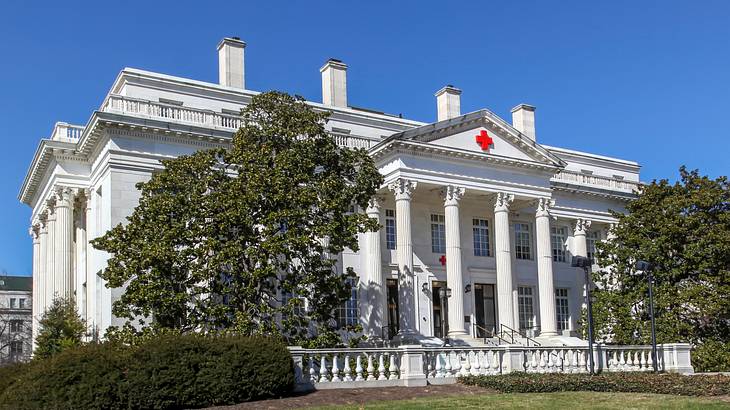
The American Rome
Thanks to the city's architecture, you will hear Washington, D.C., referred to as the American Rome. You'll spot classical Roman influence in the buildings and statues throughout Washington, D.C. When French architect Pierre L'Enfant designed the plans for Washington, he even modeled the capital's layout after Rome.
Washington, D.C., experienced the most significant growth from the mid-1800s through the mid-1900s. Plenty of new buildings were designed in the then-popular neoclassical style. From the US Capitol Building to the American Red Cross National Headquarters, you can spot Roman-inspired architecture everywhere in the American Rome.
Beaux-Arts, developed from the French neoclassical style, was another popular Romanesque style of the time. One of the best local examples is the Carnegie Library, which houses the Historical Society of Washington, D.C.
The Executive City
The Executive City is a relatively rare nickname for D.C. that evolved from it being the home to the executive branch of the United States Government, headed by the president.
The U.S. President has resided in Washington, D.C., since the start of the 19th century. Construction of the White House began in 1792. Still, it wasn't until 1800 that John Adams would be the first sitting president to move to the Executive City.
While the War of 1812 and a fire in the West Wing in 1929 would cause presidents to move out of the White House temporarily, they still lived nearby, and Washington, D.C., remained the Executive City.

Our Nation's Capital
Occasionally, you'll find Washington, D.C., referred to as Our Nation's Capital. You will often see and hear this nickname used throughout the media, particularly regarding political coverage. But Washington, D.C., is Our Nation's Capital for more than just the news reels.
It is genuinely a District for everyone in the nation. There are many free things to do around Washington, D.C., for residents and visitors alike. From the numerous Smithsonian Museums (there are 17 in the city) to the 1,754-acre Rock Creek Park, Our Nation's Capital truly is a city for We, the People.
The Federal City
The Federal City nickname's origin dates back to the very beginning of Washington, D.C. One of the fun facts about Washington, D.C., is that the city is actually a federal district. However, today, there's little difference between the District of Columbia and the Federal City, Washington, D.C.
Initially envisioned by George Washington, the fledgling nation's capital was meant to house the federal government independent of the states. The Federal City, Washington, D.C., would retain far more freedom and objectiveness than if the capital was located within the boundaries of one of the surrounding states.

The Beltway
It's common to hear Washington, D.C., and a few surrounding communities called the Beltway. This refers to Interstate 495, the Capital Beltway, which encircles the region.
This is one of the nicknames for D.C., which covers more than just the geographic boundaries of Washington, D.C., similar to the DMV moniker. The Beltway, however, is a much smaller area.
Most of the time, you'll hear the nickname used when talking about the federal government. That's because many government offices, including the Pentagon in Arlington and the CIA Headquarters in Langley, are outside Washington, D.C., but still inside the Beltway.
In Summary
Washington, D.C., was designated to be Our Nation's Capital all the way back in 1791. With more than two centuries of influential history, it should be no surprise that the city has developed quite a few nicknames.
From Chocolate City, once a badge of pride for D.C.'s African-American residents, to the Swamp, which is as unpleasant as it sounds, you'll hear Washington, D.C., referred to in countless ways.
These are just a handful of some of the most famous slogans for the Capital City. Still, hopefully, you've learned a new nickname or two from the 19 monikers for Washington, D.C., covered in this list.
Want to keep exploring?
Subscribe for discounts on tickets and hotels and our latest guides.
Thank you for subscribing
We will be in touch soon with discounts on tickets and hotels and our latest guides.
Want to keep exploring?
Subscribe for discounts on tickets and hotels and our latest guides.
Thank you for subscribing
We will be in touch soon with discounts on tickets and hotels and our latest guides.



